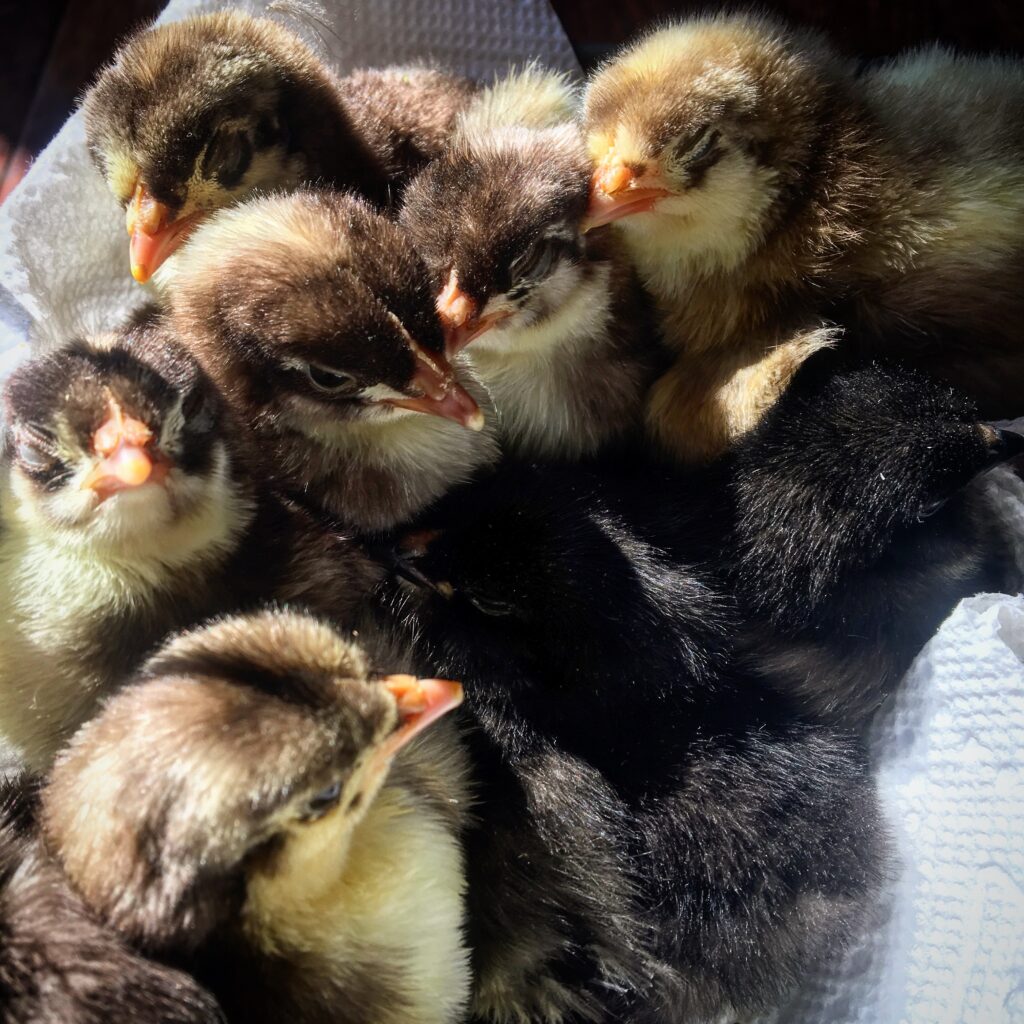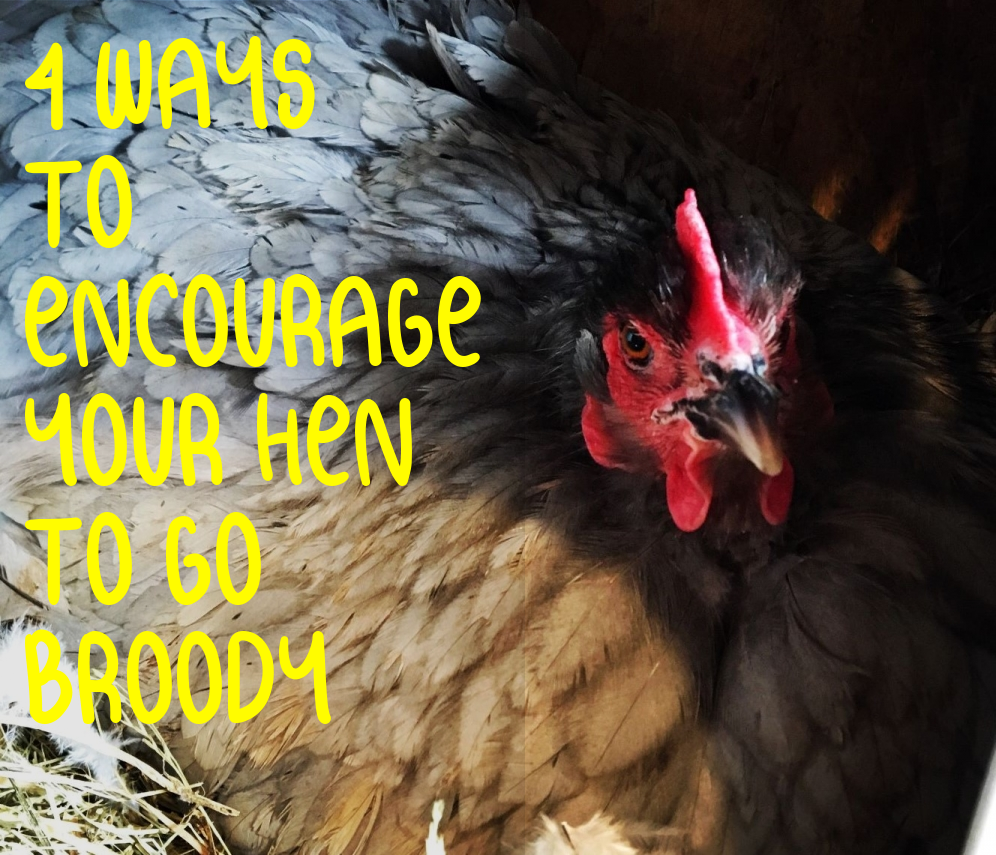A fellow homesteader recently asked us on Instagram how they can encourage their hens to go broody. They wanted to hatch eggs and raise chicks without all the work of using an incubator or brooding the chicks. Hatching chicks in an incubator can be a lot of fun and raising chicks is a rewarding experience – but one that takes time and work every day. As busy homesteaders having a hen that can hatch and raise chicks can be a great win-win situation, it’s often one less chore!
A broody hen is a chicken that is sitting on a clutch of eggs in order to hatch them. Broody hens will sit on eggs regardless if they are fertilized or unfertilized. They stay on the egg’s day and night, and typically leave only once daily to eat, drink, and poop.
How can you encourage a hen to go broody?
There are several factors that can help or hinder a hen from being broody, genetics, time of year, light conditions, and hormones. Several breeds of chickens are more apt to go broody, in fact some breeds have been selectively bred for broodiness or lack of broodiness. If you want to maximize egg production you don’t want hens that easily go broody, this is why most commercial breeds aren’t prone to becoming broody.

- Have a breed that goes broody – You can actually have a hen of any breed that has strong broody instincts; however, some breeds are more likely to produce broody hens. Broody breeds typically include Orpington’s, Silkies, Cochins, Sussexs, Brahmas, Chanteclers, Rocks, Dominiques, and many bantam breeds are also very prone to broodiness.
- If you are looking for the hands down broodiest breeds stick to cochins and silkies, they will lay fewer eggs, but are essentially walking, eating, drinking, breathing incubators. If you want to stick to an overall good dual-purpose breed that will lay well, makes a decent meat bird, and will also rear a clutch or two of chicks look into Orpingtons, Sussex, Rocks, or Dominiques.
- In our flock we have several Blue Orpingtons and speckled sussexs that have hatched and reared several batches of chicks for us. In fact, we currently have three hens that are sitting on eggs! A White Rock, a Blue Orpington, and a Blue Laced Red Wyandotte.
- Let a clutch of eggs accumulate, you can also use fake eggs, or even golf balls as a fake set of eggs. If you’re using fake eggs as soon as your hen shows willingness to become broody, replace the fakes with real eggs. We recommend labeling and dating eggs, that way you know how old the eggs are and you can tell if another hen in the coop has snuck into the nest box and laid a fresh egg. A clutch size of 8 – 12 is usually more than sufficient.
- Create an inviting brooding space – hens are more apt to brood in an area that seems safe and secure to them, a quiet isolated place away from the rest of the flock might just do the trick. You can also try adding curtains to your existing nest boxes, the darker space will help them feel secure. Add fresh clean shavings and straw to your nest boxes or try adding a nest box lower to the ground (or even on the floor of the coop).
- Move the hen – you can try moving your hen to another location, one that is isolated from the rest of the flock and quiet. Sometimes moving a hen to a new spot will actually break her broodiness. Give her a few days, if she doesn’t show interest in setting on eggs, return her to the flock and see if she shows willingness to go broody again.
Having a couple broody hens in your flock is an economical and fun way to raise your own replacement chicks. A dedicated hen can offer some relief on the homestead – one less chore, no need to add water to the incubator or check humidity, the power goes out? No problem, your hen has got you covered.
Are you planning on hatching chicks this year? Do you have a favorite broody hen or breed? Let us know in the comments below.
Until next time…
Ashley

